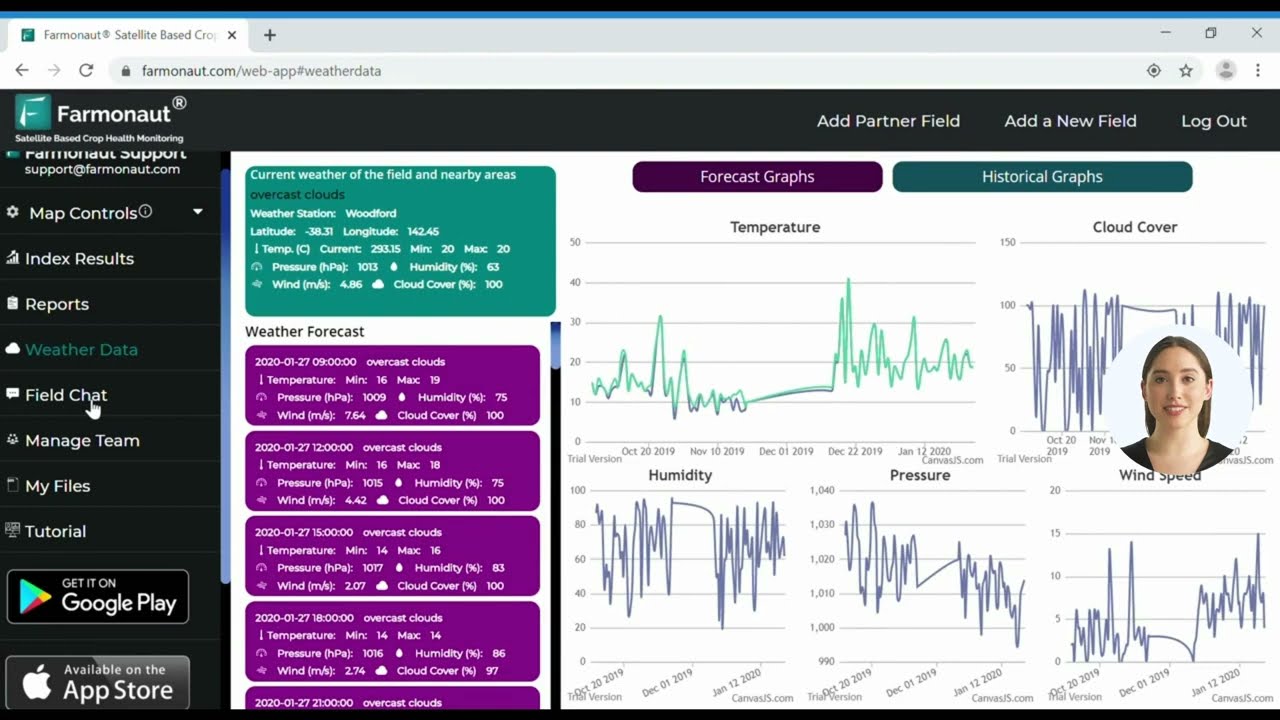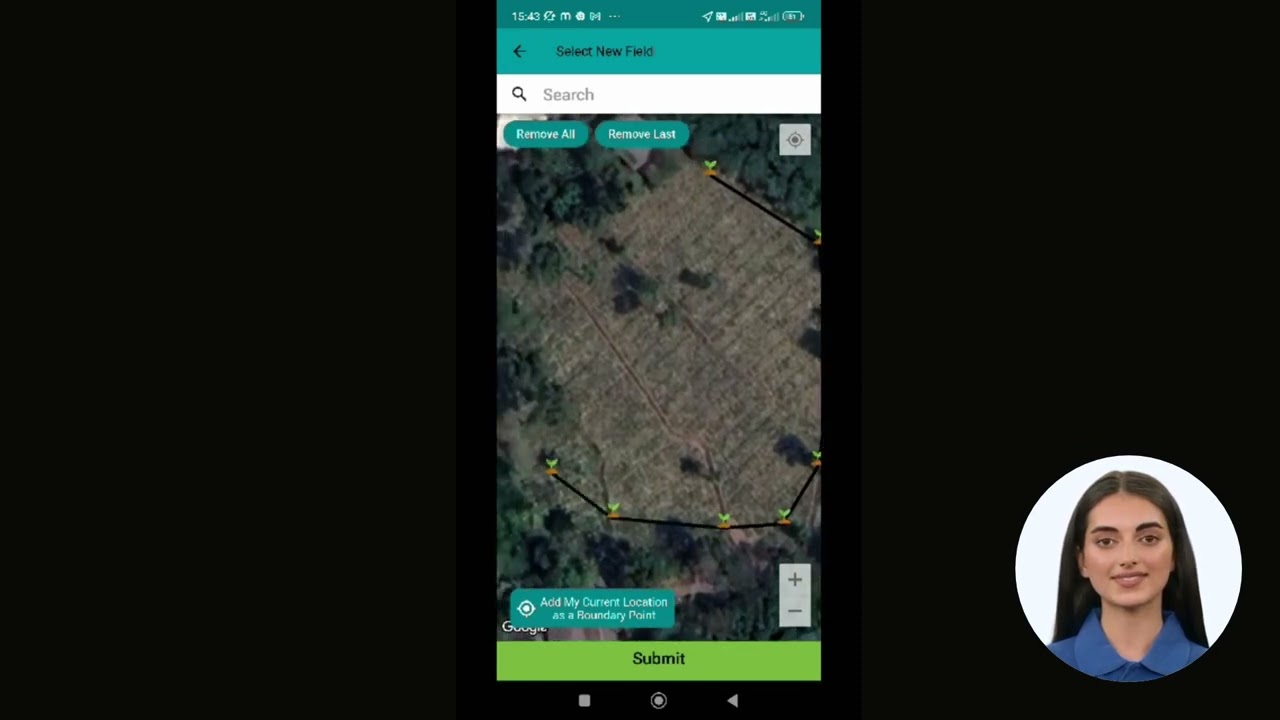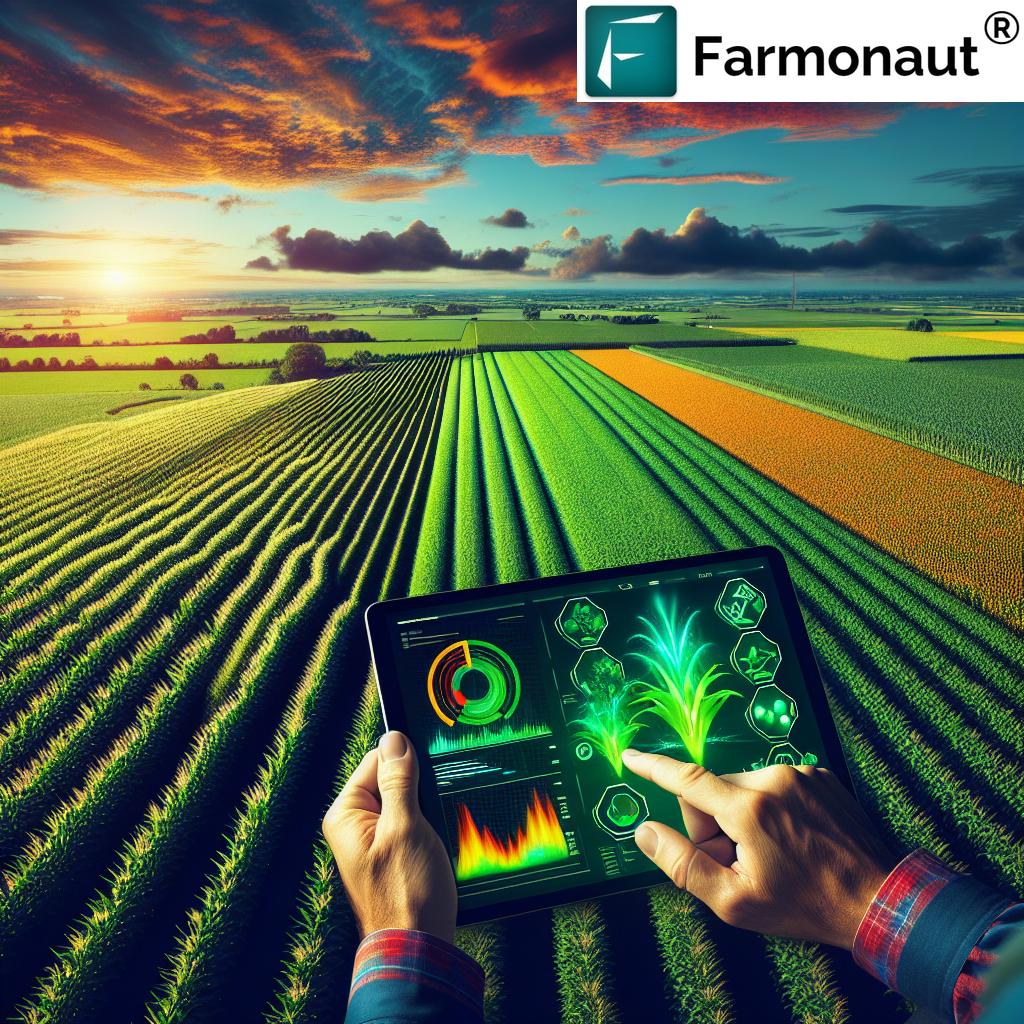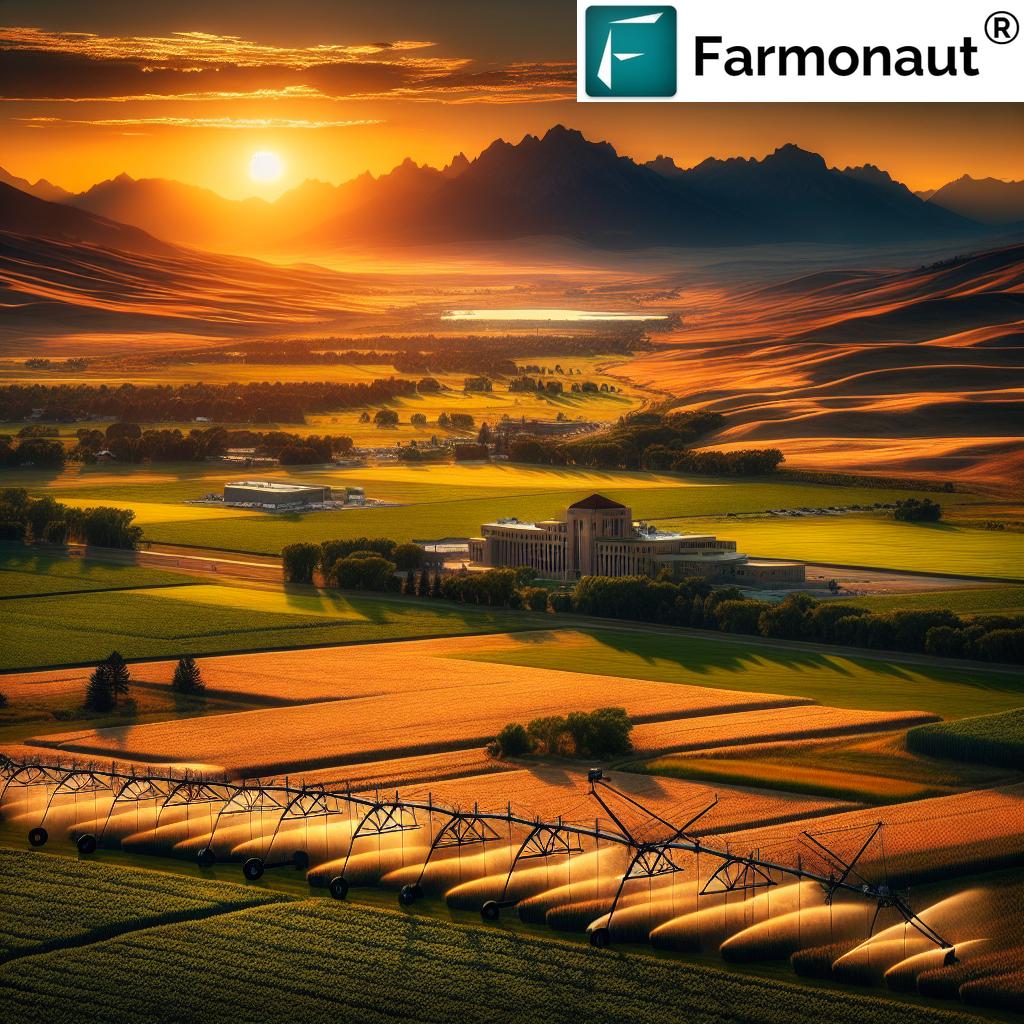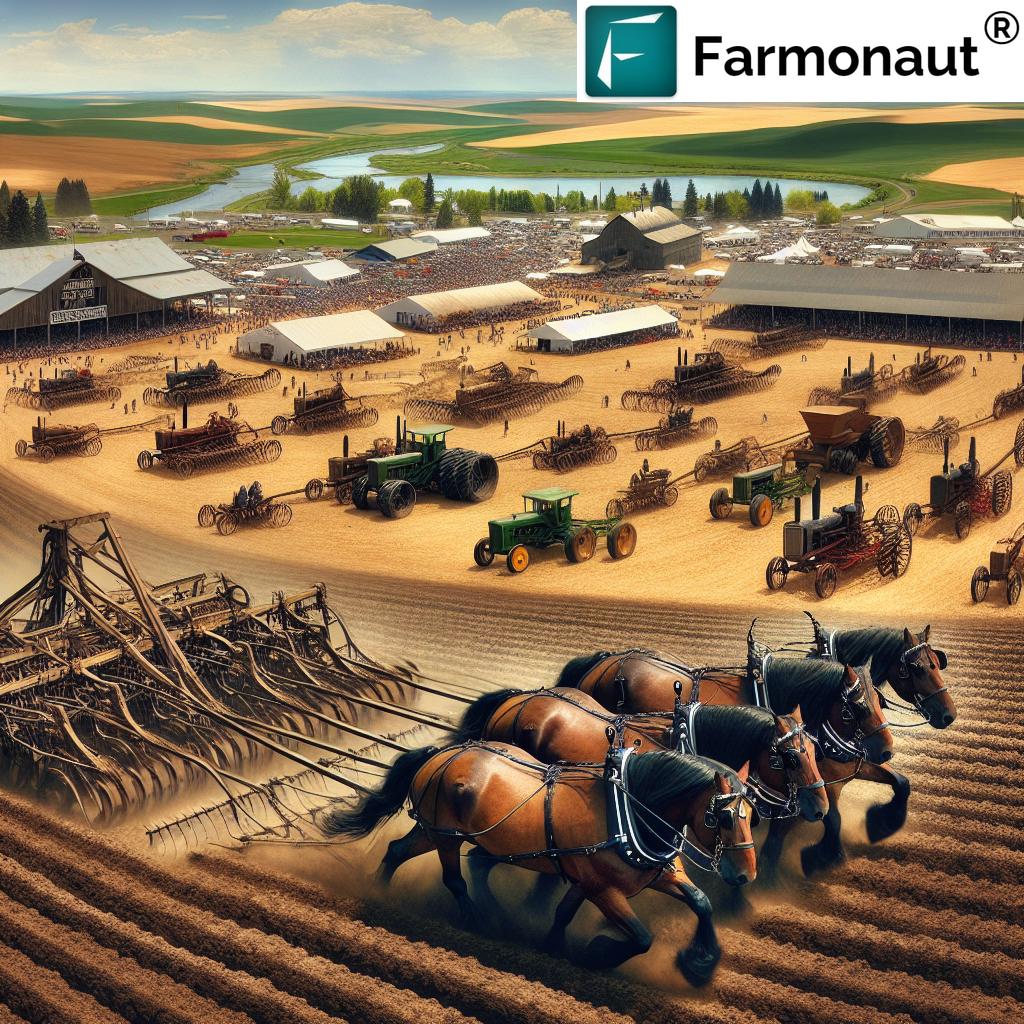USDA Hay Market Update: Alfalfa Prices Drop Amid Increased Acreage and Grasshopper Concerns in Nebraska
“USDA reports show alfalfa prices dropped $16 per ton to $263 in June, yet remain $18 higher than last year.”
In the ever-evolving landscape of agricultural markets, we at Farmonaut are committed to keeping our readers informed about the latest trends and developments in the hay and forage industry. Today, we bring you a comprehensive analysis of the recent USDA Hay Market Update, focusing on the fluctuating alfalfa prices, increased acreage, and the emerging grasshopper concerns in Nebraska. This report is crucial for growers, farm managers, and industry stakeholders to make informed decisions in their forage management strategies.
Understanding the Current Hay Market Trends
The hay market has been experiencing significant shifts in recent months, with alfalfa prices showing notable fluctuations. According to the latest USDA reports, June saw a substantial drop in alfalfa prices, decreasing by $16 per ton to reach $263. This decline follows a previous drop, indicating a continuing downward trend in the market. However, it’s essential to note that despite these recent decreases, the current price still stands $18 higher than the same period last year, reflecting the overall strength of the market.

To better understand these market dynamics, let’s dive into a detailed price comparison:
| Hay Type | June 2023 Price ($/ton) | Previous Month Price ($/ton) | June 2022 Price ($/ton) |
|---|---|---|---|
| Alfalfa | 263 | 279 | 245 |
| Grass Hay | 185 | 190 | 170 |
| Western Nebraska Alfalfa | 240 | 255 | 225 |
This table clearly illustrates the price fluctuations across different hay types and regions. The consistent trend of prices being higher than the previous year, despite recent drops, suggests a complex market influenced by various factors such as supply, demand, and environmental conditions.
Increased Harvested Hay Acreage: A Game Changer?
“Harvested hay acreage increased by 4.9% to 51.9 million acres in 2023, according to the June Acreage report.”
One of the most significant revelations from the recent USDA June Acreage report is the substantial increase in harvested hay acreage. The 4.9% increase, bringing the total to 51.9 million acres in 2023, is a development that could have far-reaching implications for the hay market. This expansion in acreage is likely to impact supply levels and, consequently, price dynamics in the coming months.
At Farmonaut, we understand the importance of accurate acreage estimation in predicting market trends. Our satellite-based crop monitoring technology offers invaluable insights for such assessments. To learn more about how we assist in crop area estimation, watch this informative video:
The increased acreage could lead to higher hay production, potentially putting downward pressure on prices. However, it’s crucial to consider other factors such as weather conditions, demand fluctuations, and regional variations that could influence the market’s direction.
Environmental Factors: The Grasshopper Concern in Nebraska
While increased acreage might suggest a potential oversupply, environmental factors continue to play a crucial role in shaping the hay market. Of particular concern is the rising grasshopper population in western Nebraska. This pest problem poses a significant threat to forage production in the region, potentially offsetting some of the gains from increased acreage.

The grasshopper infestation in western Nebraska is not just a localized issue but a symptom of broader ecological changes that could impact hay production across various regions. Farmers and agricultural managers need to stay vigilant and implement effective pest management strategies to protect their crops.
At Farmonaut, we offer advanced satellite-based crop monitoring solutions that can help detect early signs of pest infestations and crop stress. Our technology enables farmers to take proactive measures in protecting their hay and forage crops. To see how our web app works for satellite-based crop monitoring, check out this video:
Adapting to Market Changes: Forage Management Strategies
In light of these market dynamics and environmental challenges, it’s crucial for hay growers and farm managers to adapt their forage management strategies. Here are some key approaches to consider:
- Diversification of Forage Types: Consider planting a mix of alfalfa and grass hay to mitigate market risks.
- Implementing Efficient Irrigation Systems: Proper water management can improve yield and quality, especially in drought-prone areas.
- Regular Soil Testing and Nutrient Management: Optimize fertilizer use to enhance hay quality and yield.
- Integrated Pest Management (IPM): Develop comprehensive strategies to combat grasshoppers and other pests.
- Exploring Alternative Forages: Consider planting warm-season annuals as a supplement to traditional hay crops.
To stay ahead in this dynamic market, leveraging technology for precise farm management is crucial. Farmonaut’s satellite-based solutions offer real-time insights into crop health, helping farmers make data-driven decisions. Learn more about how we’re making farming better with satellite data:
Regional Market Updates and Price Fluctuations
The hay market is characterized by significant regional variations. Let’s take a closer look at some key regional updates:
Midwest
The Midwest region, including states like Nebraska, has seen mixed trends. While the increased acreage might suggest a potential oversupply, the grasshopper concerns in western Nebraska could lead to localized shortages. Prices in this region have shown slight declines but remain above last year’s levels.
Western States
Western states continue to grapple with dry conditions, which could impact hay production. Despite the overall price drop, certain areas might see sustained higher prices due to drought-induced scarcity.
Eastern Region
The Eastern region has experienced more stable conditions, with prices showing less volatility compared to other areas. However, transportation costs continue to play a significant role in delivered prices.
For farmers and agribusinesses managing operations across multiple regions, having access to real-time data is crucial. Farmonaut’s platform offers comprehensive monitoring and management tools. Here’s a tutorial on how to use our smartphone apps for farm mapping:
Navigating Market Challenges: Tips for Producers
As we navigate these complex market conditions, here are some strategies for hay and forage producers to consider:
- Stay Informed: Regularly monitor USDA reports and market updates to make informed decisions.
- Optimize Storage: Proper hay storage can help maintain quality and allow for strategic selling when prices are favorable.
- Consider Alternative Markets: Explore opportunities in pellet production or specialized markets like horse hay.
- Implement Technology: Utilize precision agriculture tools like Farmonaut’s satellite monitoring to optimize production and reduce costs.
- Plan for Drought Resilience: Develop strategies to mitigate the impact of dry conditions, such as efficient irrigation systems and drought-resistant varieties.
To assist you in implementing these strategies, Farmonaut offers a range of tools and services. Our satellite-based monitoring can help you track crop health, optimize resource use, and make data-driven decisions. Explore our offerings:
The Role of Technology in Modern Hay and Forage Management
In today’s rapidly changing agricultural landscape, technology plays a pivotal role in optimizing hay and forage production. Farmonaut’s advanced satellite-based solutions offer numerous benefits for producers:
- Real-time Crop Health Monitoring: Our satellite imagery provides up-to-date information on vegetation health, helping you identify issues early.
- Precision Resource Management: Optimize water and fertilizer use based on accurate field data.
- Weather Forecasting: Access detailed weather predictions to plan harvesting and other field operations effectively.
- Yield Estimation: Use our AI-powered tools to estimate yields and plan your market strategy.
For developers and agribusinesses looking to integrate these powerful tools into their own systems, we offer comprehensive API solutions. Explore our API capabilities:
Looking Ahead: Future Trends in the Hay Market
As we look to the future of the hay and forage market, several trends are likely to shape the industry:
- Increased Focus on Sustainability: Expect a growing emphasis on sustainable farming practices, including water conservation and reduced chemical use.
- Technological Integration: The adoption of precision agriculture tools, like those offered by Farmonaut, will become increasingly crucial for competitive advantage.
- Climate Adaptation: Farmers will need to adapt to changing climate patterns, potentially shifting crop varieties and planting schedules.
- Market Volatility: Continued price fluctuations are likely, necessitating flexible management strategies.
- Alternative Forage Options: There may be increased interest in alternative forages and mixed cropping systems to enhance resilience.
Conclusion: Staying Ahead in a Dynamic Market
The hay and forage market continues to present both challenges and opportunities for producers. The recent drops in alfalfa prices, coupled with increased acreage and environmental concerns like the grasshopper situation in Nebraska, underscore the complex nature of this industry. By staying informed, adopting innovative technologies, and implementing adaptive management strategies, producers can navigate these challenges successfully.
At Farmonaut, we’re committed to providing the tools and insights needed to thrive in this dynamic market. Our satellite-based solutions offer unparalleled visibility into crop health and field conditions, enabling data-driven decision-making. As the industry evolves, we’ll continue to innovate and support farmers in their pursuit of efficient, sustainable, and profitable hay and forage production.
FAQ Section
Q: How can farmers mitigate the impact of grasshopper infestations on hay crops?
A: Farmers can implement integrated pest management strategies, including early detection through satellite monitoring, targeted pesticide application, and promoting natural predators. Regular field scouting and collaboration with local agricultural extension services are also crucial.
Q: What are warm-season annuals, and how can they help in forage production?
A: Warm-season annuals are crops like sorghum-sudangrass, pearl millet, or teff grass that thrive in hot summer conditions. They can provide additional forage when cool-season grasses slow their growth, helping to maintain a steady feed supply.
Q: How does the increased hay acreage impact market prices?
A: Increased acreage typically leads to higher supply, which can put downward pressure on prices. However, other factors like weather conditions, export demand, and regional variations also play significant roles in determining market prices.
Q: What role does nutrient management play in hay production?
A: Proper nutrient management is crucial for optimal hay yield and quality. It involves regular soil testing, balanced fertilizer application, and consideration of crop rotation to maintain soil health and productivity.
Q: How can Farmonaut’s technology help in hay and forage management?
A: Farmonaut’s satellite-based monitoring provides real-time insights into crop health, soil moisture levels, and weather patterns. This information helps farmers optimize irrigation, detect pest issues early, and make informed decisions about harvesting and resource allocation.



